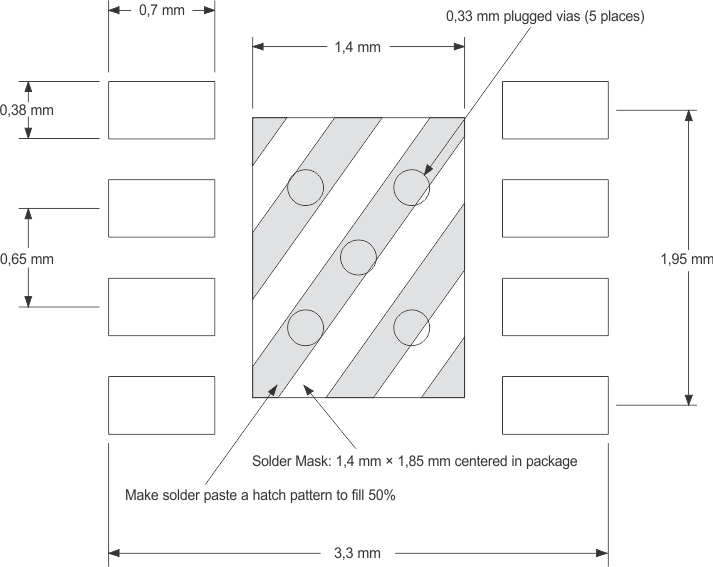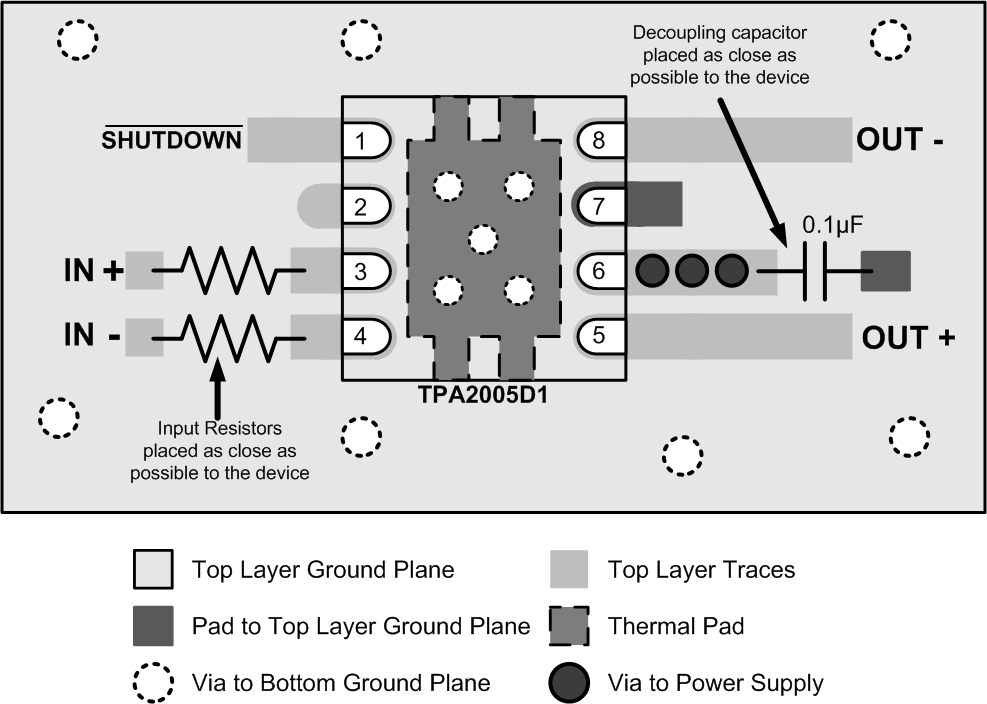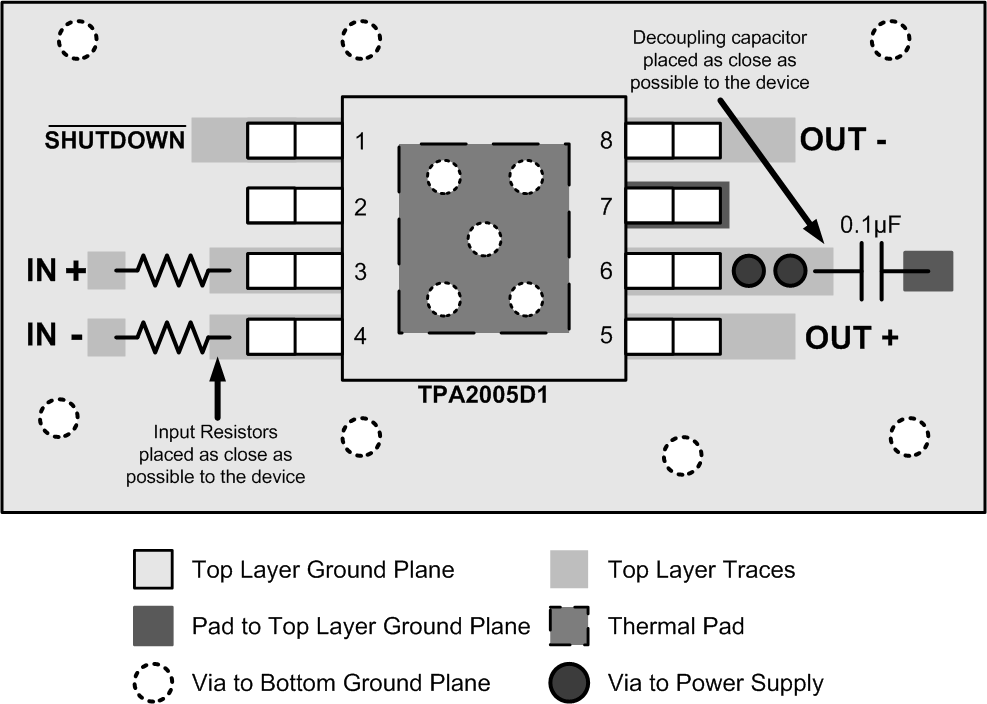SLOS474E August 2005 – March 2016 TPA2005D1-Q1
PRODUCTION DATA.
- 1 Features
- 2 Applications
- 3 Description
- 4 Revision History
- 5 Device Comparison Table
- 6 Pin Configuration and Functions
- 7 Specifications
- 8 Parameter Measurement Information
- 9 Detailed Description
- 10Application and Implementation
- 11Power Supply Recommendations
- 12Layout
- 13Device and Documentation Support
- 14Mechanical, Packaging, and Orderable Information
Package Options
Mechanical Data (Package|Pins)
Thermal pad, mechanical data (Package|Pins)
Orderable Information
12 Layout
12.1 Layout Guidelines
12.1.1 Component Location
Place all the external components very close to the TPA2005D1-Q1 device. The input resistors need to be very close to the TPA2005D1-Q1 input pins so noise does not couple on the high-impedance nodes between the input resistors and the input amplifier of the TPA2005D1-Q1 device. Placing the decoupling capacitor, CS, close to the TPA2005D1-Q1 device is important for the efficiency of the class-D amplifier. Any resistance or inductance in the trace between the device and the capacitor can cause a loss in efficiency.
12.1.2 Trace Width
Make the high current traces going to pins VDD, GND, VO+ and VO– of the TPA2005D1-Q1 device have a minimum width of 0.7 mm. If these traces are too thin, the TPA2005D1-Q1 performance and output power will decrease. The input traces do not need to be wide, but do need to run side-by-side to enable common-mode noise cancellation.
12.1.3 8-Pin QFN (DRB) Layout
Use the following land pattern for board layout with the 8-pin QFN (DRB) package. Note that the solder paste should use a hatch pattern to fill solder paste at 50% to ensure that there is not too much solder paste under the package.
 Figure 42. TPA2005D1-Q1 8-Pin QFN (DRB) Board Layout (Top View)
Figure 42. TPA2005D1-Q1 8-Pin QFN (DRB) Board Layout (Top View)
12.2 Layout Example
 Figure 43. TPA2005D1-Q1 DRB Package Layout Example
Figure 43. TPA2005D1-Q1 DRB Package Layout Example
 Figure 44. TPA2005D1-Q1 DGN Package Layout Example
Figure 44. TPA2005D1-Q1 DGN Package Layout Example